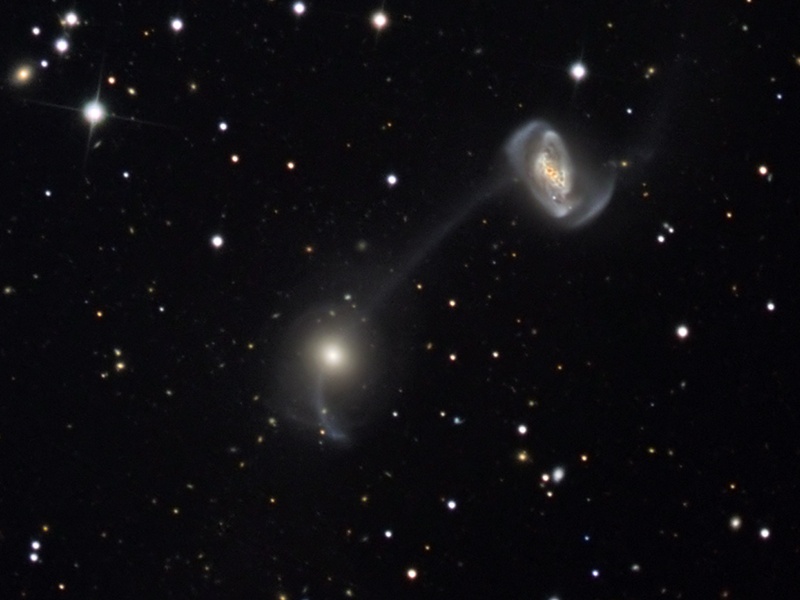Credit & Copyright: Acquisition - Martin Winder,
Processing - Warren Keller
Explanation:
Galaxies NGC 5216 (top right) and NGC 5218 really do look like
they are connected by a string.
Of course, that string is
a
cosmic trail of gas, dust, and stars about 22,000 light-years long.
Also known
as
Keenan's system (for its
discoverer)
and Arp 104, the interacting galaxy pair is some 17 million
light-years away in the constellation Ursa Major.
The
debris trail that joins them, along with NGC 5218's comma-shaped
extension and the distorted arms of NGC 5216 are a consequence of
mutual gravitational tides that disrupt the galaxies as they repeatedly
swing close to one another.
Drawn out over billions of years,
the encounters will likely result in
their merger into a single galaxy of stars.
Such spectacular
galactic mergers are now understood to be a normal
part of the evolution of galaxies, including our own
Milky Way.
1999 2000 2001 2002 2003 2004 2005 2006 2007 2008 2009 2010 2011 2012 2013 2014 2015 2016 2017 2018 2019 2020 2021 2022 2023 2024 2025 |
Январь Февраль Март Апрель Май Июнь Июль Август Сентябрь Октябрь Ноябрь Декабрь |
NASA Web Site Statements, Warnings, and Disclaimers
NASA Official: Jay Norris. Specific rights apply.
A service of: LHEA at NASA / GSFC
& Michigan Tech. U.
|
Публикации с ключевыми словами:
interacting galaxies - взаимодействующие галактики
Публикации со словами: interacting galaxies - взаимодействующие галактики | |
См. также:
Все публикации на ту же тему >> | |
Мнение читателя [1]
